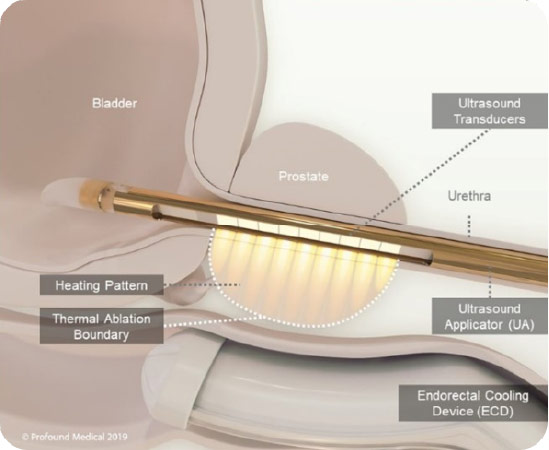An Inside Look at the TULSA Treatment Option For Prostate Cancer

Surgical procedures or radiation therapy have traditionally been the methods of choice for the management of prostate cancer, which is the leading cause of death among men globally due to cancer. The landscape of prostate cancer management has changed, however, as a result of the introduction of novel treatments such as transurethral ultrasound ablation (TULSA). The following is an in-depth analysis of six important aspects that illustrate the value of TULSA treatment for individuals who have prostate cancer.
A Minimally Invasive Precision
People are often scared of invasive procedures which makes matters worse. In TULSA, you will find a secure haven if you are seeking an escape. In case you weren’t aware, the TULSA procedure is distinguished from other surgical treatments by the fact that it is minimally invasive, which represents a paradigm shift from traditional surgical measures. Because it makes use of real-time magnetic resonance imaging (MRI) guidance, TULSA makes it possible to target malignant tissue embedded within the prostate gland precisely. TULSA is administered transurethrally, which ensures that there is less injury to the healthy tissues surrounding the urethra.
Individualized Treatment Programs
Treatment with TULSA is characterized by its adaptability to the specific characteristics of each patient’s prostate cancer, which is one of its defining characteristics. Individualized treatment plans can be developed by medical professionals depending on a variety of characteristics, including the size, location, and aggressiveness of the tumor. This individualized method improves the efficacy of therapeutic outcomes while simultaneously reducing the likelihood of unfavorable effects. In addition, because TULSA treatment is performed in an outpatient setting, patients can endure the operation with a minimal amount of disturbance to their regularly scheduled activities.
Providing Treatment For Multiple Types Of Cancer
There are many different varieties of prostate cancer, ranging from localized to recurrent occurrences, and the TULSA treatment takes into account all of these different types. Because of its capability to precisely target particular regions of the prostate gland, it is a viable alternative for people who are experiencing cancer in a variety of stages and to varying degrees. In addition, the TULSA treatment can be utilized either as a primary therapy or in concert with other modalities, providing a holistic approach to the care of cancer.
Side Effects Reduction And Mitigation
Compared to more traditional therapies such as surgery and radiation therapy, the TULSA treatment is associated with a lower incidence of adverse effects, particularly those that affect the function of the urinary system and the sexual organs. The procedure reduces the likelihood of problems such as urine incontinence and erectile dysfunction by preventing injury to the healthy tissues close to the surgical site. Not only does this facet improve the quality of life for patients, but it also highlights the safety profile of TULSA as a potential therapeutic alternative.
Rapid Recovery And Reduced Downtime
Because TULSA treatment is minimally invasive, patients experience shorter periods of recovery after completion of the procedure. TULSA allows patients to return to their regular activities within a few days of the surgery, in contrast to standard surgeries, which need patients to remain in the hospital for an extended period and undergo significant rehabilitation. During this accelerated recovery process, patients not only see a reduction in the physical weight they are carrying, but they also experience a more rapid return to normalcy in their lives.
Evidence-Based Efficacy
Studies conducted in clinical settings have demonstrated that TULSA treatment is effective in halting the progression of prostate cancer and enhancing the outcomes for medical patients. Following treatment with TULSA, encouraging rates of disease-free survival and minimal recurrence have been observed, according to the findings of the research. Furthermore, the high degree of patient satisfaction that was recorded in clinical studies is evidence that TULSA treatment is both effective and tolerable.
Conclusion
The TULSA treatment provides patients with an alternative treatment modality that is less intrusive but still extremely successful in comparison to conventional treatment modalities. With its precision targeting, individualized treatment regimens, acceptable safety profile, and demonstrated clinical success, TULSA is well-positioned to revolutionize the way that prostate cancer patients are treated all over the world. The TULSA treatment reflects the promise of improved results and enhanced quality of life for patients who are coping with this frequent malignancy.
